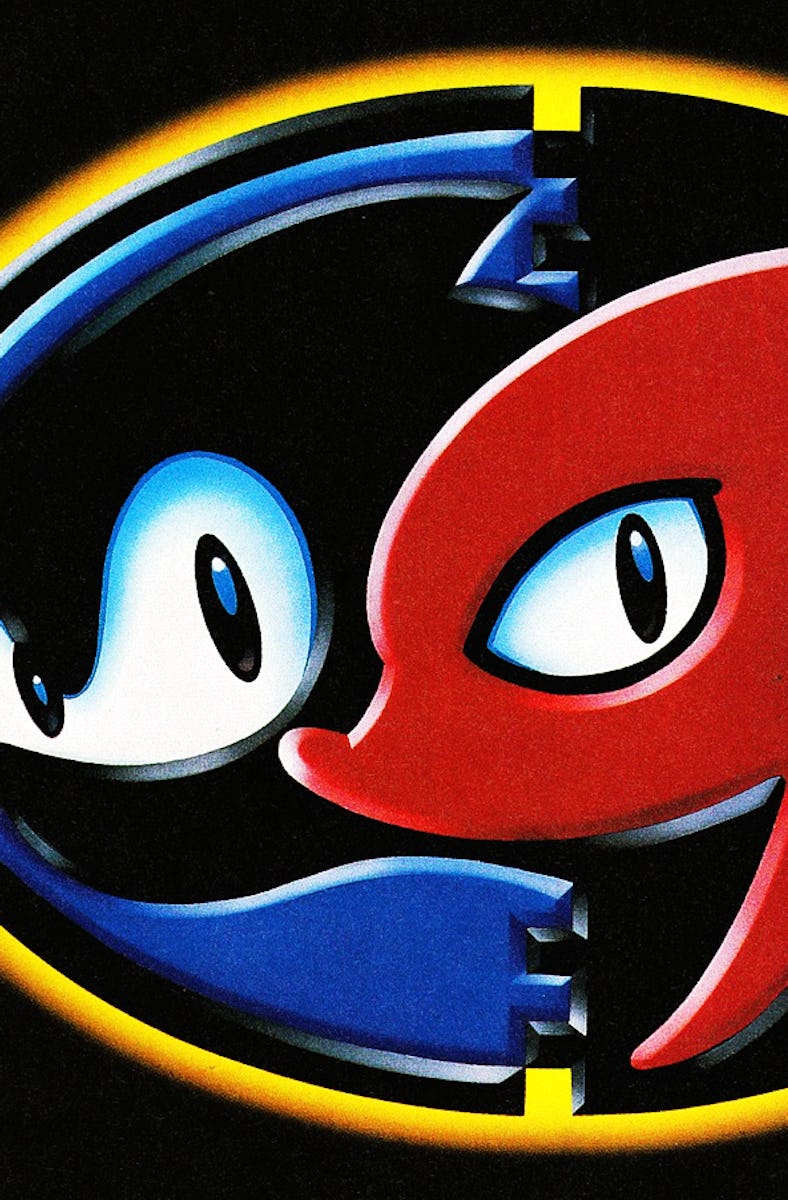30 Years Ago, Sonic & Knuckles Turned a Missed Deadline Into a Wonderfully Weird Invention
Gotta go fast.

Some games become legendary not just for being great, but because of how much their inspiration is felt in the games that come after them. Just think of how much Demon’s Souls has influenced the design of action RPGs or how many developers Destiny convinced that live-service shooters were the wave of the future.
This is not about one of those games. Sonic & Knuckles is remembered not for being influential, but for including one innovation so strange that it’s never been replicated again. When it launched on October 18, 1994, Sonic & Knuckles had the most unusual cartridge of any Sega Genesis game; the result of production issues at Sega that turned the game into one of the most memorable titles on the console.
Sonic & Knuckles’ unique cartridge was a big part of the game’s marketing.
Knuckles the Echidna was originally planned as a new character in Sonic the Hedgehog 3, but during development, Sega realized it wouldn’t have the entirety of the game ready for its February 1994 launch. Rather than delay it, the developer split the game in half, saving the new character and some of the planned levels for Sonic & Knuckles instead. But Sonic the Hedgehog 3 was designed with Knuckles in mind, so Sega found a fascinating workaround to let both games reach their full potential.
Seeing the Sonic & Knuckles cartridge in action for the first time was magical. Compared to other cartridges, Sonic & Knuckles is weirdly bulky, with a flap on top that opens up to reveal its innards. Another cartridge can then be slotted into the top, changing the game itself. The feature — which Sega dubbed “lock-on technology” — was designed for Sonic the Hedgehog 3, bringing Knuckles into the game when the two are connected. But the magic also works with Sonic the Hedgehog 2, again turning Knuckles into a playable character. Despite the prevalence of playground rumors that you could transport Knuckles into other, unrelated games, plugging any other cartridge into the top boots up Blue Sphere. This simple game is modeled after the special stages in Sonic the Hedgehog 3, where players have to collect blue spheres while running on the surface of a globe.
Knuckles introduced new abilities that made him more than just a Sonic clone.
Though it was a fairly mind-blowing feature at the time, Sega never used lock-on technology again. Yes, it was innovative, but it was also a tool designed to solve one very specific problem. As fun as it is to speculate about bizarre ways that Sega could have expanded its lock-on technology, like hiding secrets within games or enabling unexpected character crossovers, it was set aside after serving its purpose.
Instead of the new technology Sega created for the cartridge, Sonic & Knuckles’ new character is the element that’s lived on longest after the game’s release. More than a simple reskin of Sonic, Knuckles has the ability to glide and climb walls, fundamentally changing the series’ core gameplay. Originally an antagonist in Sonic the Hedgehog 3, Knuckles has become one of the Sonic series’ most popular characters. Along with appearing in multiple games, comic books, and cartoon adaptations, Knuckles is set to be a major character in the upcoming Sonic the Hedgehog 3 live-action movie. So while lock-on technology may have been a one-and-done innovation for Sega, the game that it was designed for has become a lasting part of the company’s legacy.
More than just an impressive technological trick, the Sonic & Knuckles cartridge is emblematic of a time when developers had to work around much more restrictive hardware shortcomings, and turned those limitations into strengths instead. We may have things much easier now, but it’s hard not to feel like something has been lost since weird, brilliant experiments like Sonic & Knuckles have been left behind.